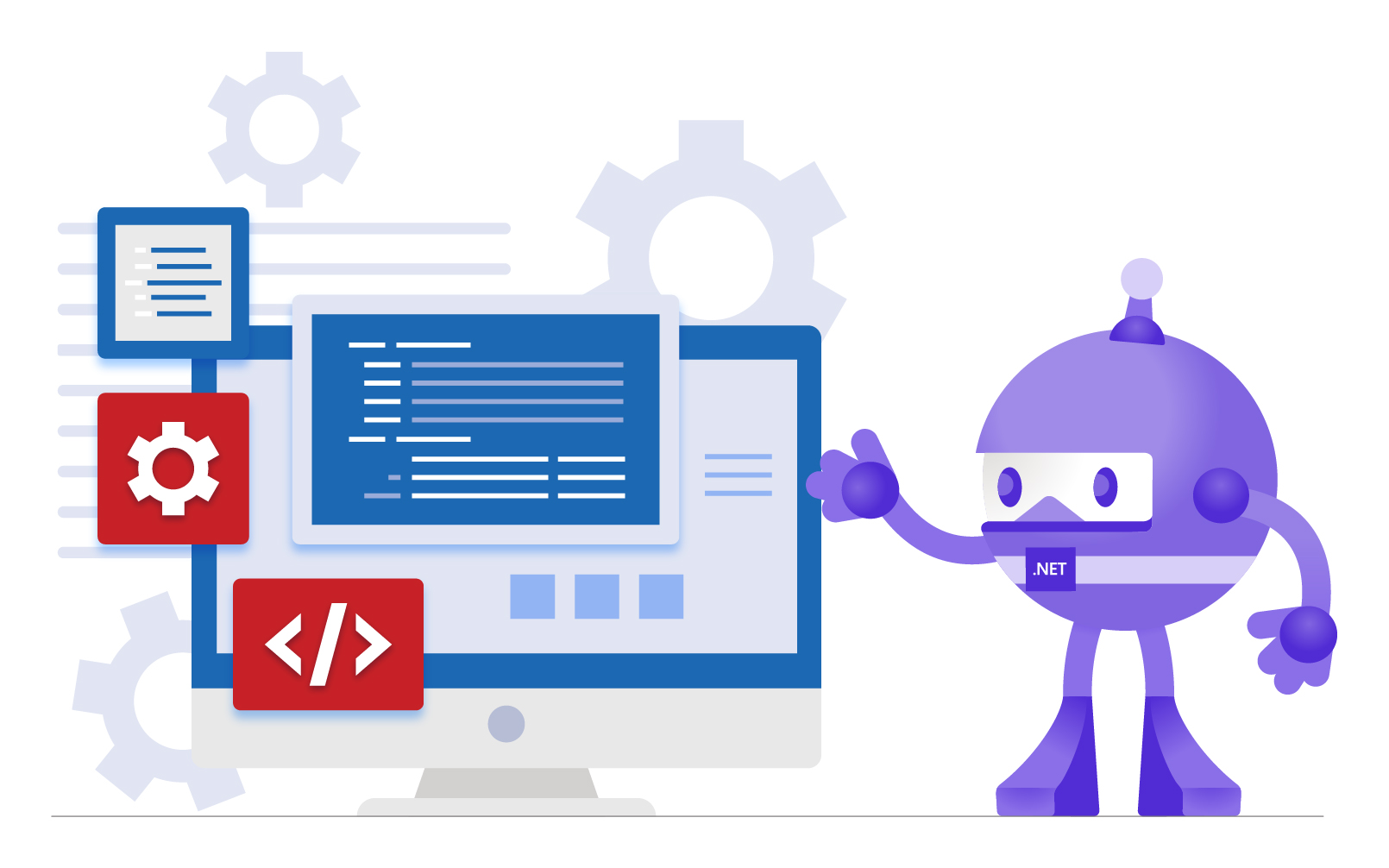
What Is The .NET Framework & Is It Dead?
Ritesh Shah
8 min read

.NET has been a popular framework for developing business applications for many years. Launched in 2002, the framework was ahead of its time, offering a unique platform for developing reasonably convenient applications.
However, its popularity is waning, and there are several good reasons businesses should consider moving to other frameworks. In this blog post, we’ll discuss what .NET is and why it’s becoming obsolete, as well as cover the entire rise and fall of this once beloved development framework.
What Is .NET? 🧐
.NET is a Software framework developed by Microsoft that runs mainly on Microsoft Windows. Despite being a Windows-exclusive framework, it became the second most popular development platform after Node.Js.
To summarise, it’s a development platform for building almost anything digital — from desktop or web applications to cloud computing to mobile applications to video games.

The platform allows developers to use the tools, programming languages, and reusable elements inside it to build desktop, web or mobile applications. The different tools comprising this framework, such as Integrated Development Environment (IDE), programming languages, and libraries, make development more accessible and convenient for programmers.
Let’s dig deeper into these three components to understand how they work individually and contribute to the collective efforts of the platform.
Integrated Development Environment (IDE) 🔑
An IDE software suite provides the necessities for coding and testing an application. In .NET, the default IDE is visual studio code. It was designed to be a convenient platform for developing end-to-end applications. In .NET, the same IDE is used for all .NET applications; thus, you won’t need to switch between different IDEs.
Programming Languages 👨💻
The .NET framework supports programming languages such as C#, F#, and visual basic .NET, allowing developers versatility to build different software applications.
.NET Libraries 📚
The .NET framework relies on an extensive standard set of framework class libraries that provide implementations for many general and specific functionalities.
Overall, over the years, .NET has impacted many multinational companies and has been a part of the technological structure of enterprises such as Microsoft, GoDaddy, Fujitsu, Microsoft, Dell, and Stack Overflow, to name a few.
What Can You Gain From .NET? 🤔
Perhaps, the biggest problem with development is complexity, and .NET does an excellent job of reducing that. With the shared code libraries, your developers will not have to write code from scratch, meaning precious time and resources will be spared. Furthermore, the deployment and maintenance infrastructure of the .NET framework is comparatively more straightforward than other platforms.
The .NET framework is also relatively robust, meaning whatever software or application you’re coding will have the least number of crashes, mainly due to its excellent caching system.
Like other programming frameworks such as Java, .NET also provides a solid security scope for the application being built. This is primarily facilitated by their Code Access Security, a protocol developed by Microsoft to stop potentially malicious code from getting unauthorised access to applications built on the framework.
Lastly, memory leaks are also minimised with this framework as the .NET Common Language Runtime (CLR) — the virtual machine component that manages the execution of .NET applications, provides a controlled environment where the memory is collected by a garbage collector, thereby reducing potential memory loss.
As you can see, there is quite a lot to gain from adopting the .NET framework, especially if you want to build secure and stable applications quickly without much groundwork.
A Brief History of the .NET Framework 🕰️
.NET is a family of other frameworks and tools that comprises the overall .NET platform. The three components are the .NET framework (discussed in this article), .NET Core, and Xamarin.

We’ll go through each of these components and determine their specific use-cases whilst understanding their interrelationship and seeing where each fits into the overall .NET framework puzzle.
We’ll use the following analogy to help you understand the historical relationship of the three components. Consider that .NET Framework is the elder brother, .NET Core is the middle child, and Xamarin is one of their relatives, related but not directly.
.NET Framework 📂
We’ll start with the eldest, i.e. .NET framework, which was launched in 2002 and was the first implementation of its kind.
The framework was initially meant to program desktop applications for Windows operating systems only — it functioned and worked very differently back then from what it is now.
The framework was distributed as a closed source tool and provided numerous libraries, reusable elements and templates for building applications and APIs.
Furthermore, through the .NET framework, programmers could also create web applications using ASP.NET, a framework inside the .NET framework specifically designed for building web applications and services using .NET supported programming languages such as C#.
The ASP.NET framework became an integral part of the .NET framework thanks to the wide variety of user-friendly web-application templates, patterns, and libraries, all of which could be used to build web applications and services on Microsoft Web Servers.
As a result, the framework became famous for its convenience and reliability and is still used today.
With that said, the .NET framework does have its fair share of problems, and the big ones are – it supports windows exclusively, i.e. zero cross-platform opportunities (more on this later), is closed source, and the technology is getting outdated.
Therefore, Microsoft had no choice but to create a superior version of the .NET framework; thus, .NET CORE came into existence.
.NET CORE 🗄️
In 2016, Microsoft released .NET CORE, which was a major revamp from the original .NET framework. The new framework was built to be a much faster and lighter version of its predecessor.

But more importantly, .NET CORE addressed the biggest drawback of the .NET framework, cross-platform development. Making drastic changes such as adding a ton of new features and functionalities and rewriting ASP.NET for .NET CORE wouldn’t require Microsoft infrastructure solely to run and could be implemented on any server.
At this point, developers could use either or both the .NET framework and .NET CORE to build almost any type of desktop or web application. However, to be completely cross-platform and cover all bases, mobile application development was still missing, so enter XAMARIN!
XAMARIN 📘
XAMARIN is an open-source, cross-platform mobile application development tool that allows developers to create software for IOS, Android, and Windows with .NET.

XAMARIN brought its own runtime application forms and APIs and finally completed the set to finally make the .NET platform genuinely cross-platform.
How Does .NET Work Exactly? 💭
Well, now that we’ve discussed the three components of the overall .NET platform, you must be interested to know how it works to create cross-platform applications, right?
You are in luck because we will go over just that next. You must’ve noticed that we’ve used the term “runtime” a few times throughout this article. Runtimes are an integral part of the .NET platform and facilitate a large portion of the development for which the different frameworks are used.
.NET applications work with a runtime, which can be considered an interpreter between the application and the operating system. The runtime’s job is to help the two understand each other and act as mediators.
Let’s say the runtime takes C# code from the .NET application and translates it into a common intermediate language (CIL), further simplified into machine-level language that an OS can interpret and understand.
While all of this sounds a bit too technical and complex, using this exact process, .NET could finally achieve cross-platform development because now it didn’t matter what platform the application was initially written for – the runtime could translate it into anything that the OS could understand.
This brings us to .NET 5, which was Microsoft’s way of unifying everything under the .NET umbrella to a single platform with the same runtime. And APIs. .NET 5 was released in 2021 and was followed up by .NET 6 towards the end of that year. They are planning to release .NET 7 very soon as well.
Why Is The .NET Framework Becoming Obsolete? 🏚️
After going through the timeline of .NET, it should now be apparent that the original .NET framework is highly outdated.
Of course, the main reason behind this is the lack of cross-platform development, which was rectified in future versions released by Microsoft.
Most developers and programmers prefer programming languages and frameworks that offer flexibility when working with them. And thus, it comes as no surprise that the number of developers with specific expertise in the .NET framework is dwindling.
In essence, the fact that .NET only works on Windows OS is a significant drawback hindering the framework and slowly and steadily pushing it towards redundancy.
What’s Next For The .NET Framework? ⏭️
The deprecation of the .NET framework brings a challenge for existing applications still using this technology.
Microsoft’s support policy has suggested that the framework will not be developed and updated any longer; however, existing applications will still be supported as long as they are installed in a supported version of Windows.
So is .NET really dying? The answer, as with most things in life, is complicated. While the framework may not be disappearing anytime soon, it’s clear that Microsoft’s focus has shifted, and its development teams are moving on to other projects.
This doesn’t mean your business needs to abandon ship yet; our team of experts can help you assess your options and make a smooth transition to another platform or framework if necessary.
Is your company still using the .NET framework? If so, book a discovery chat with us today — we’d be happy to discuss your options and help you chart a course for the future.
Topics
Published On
June 20, 2022

